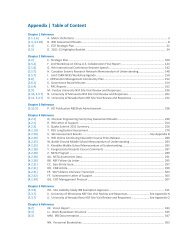Fries
Fries
Fries
Create successful ePaper yourself
Turn your PDF publications into a flip-book with our unique Google optimized e-Paper software.
ICAME Journal No. 34means of signalling grammatical functions in English. In Old English, the majorsignal of grammatical functions was the inflectional form of words, while inModern English the major signal is the physical order of elements in the sentence.<strong>Fries</strong> was interested in how this change came about. Thus, in <strong>Fries</strong>(1940c: 206) he presents the results of a study of the changing patterns ofexpression of a head-modifier relation in which the modifier is what he calls a‘genitive’. In order to explore this change he had to locate the various optionswhich were used at one or another time to express this relationship. He foundthree: (a) the inflected genitive placed before the noun it modifies (the pre-positivegenitive as in the boy’s hat, the table’s leg); (b) the inflected genitive placedafter the noun it modifies (the post-positive genitive as in OE xghwylcymbsittendra 14 ); and (c) the periphrastic genitive (the ‘of’ construction as in themother of the children, the leg of the table). Table 4 (from <strong>Fries</strong> 1940c: 206) presentsthe shifting relative frequencies of these three constructions from 900 to1300:Table 4: Frequency of three placements of the English genitive constructionthrough 400 yearsPost-positive genitive ‘Periphrastic’ genitive Pre-positive genitivec. 900 47.5% 0.5% 52.0%c. 1000 30.5% 1.0 % 68.5%c. 1100 22.2 % 1.2 % 76.6 %c. 1200 11.8 % 6.3 % 81.9 %c. 1250 0.6 % 31.4 % 68.9 %c. 1300 0.0 % 84.5 % 15.6 %Again, raw numbers are unimportant other than to ensure that sufficient numbersof instances exist in each cell to be reliable. What is relevant is the changingpatterns of relative frequencies of the various alternatives of expressionused. In the earliest data we see that the periphrastic genitive is almost nonexistantand the pre-positive and post-positive genitives are used roughlyequally. By 1300 we see that the post-positive genitive has disappeared from useand the most frequent means used to express the genitive relation is the periphrasticgenitive.106








